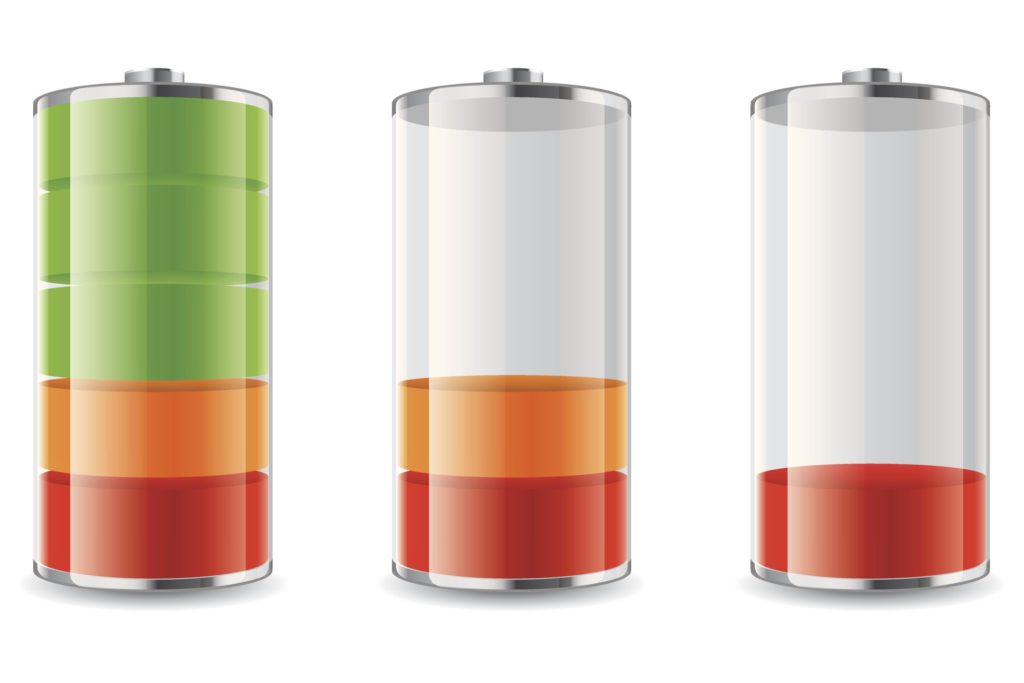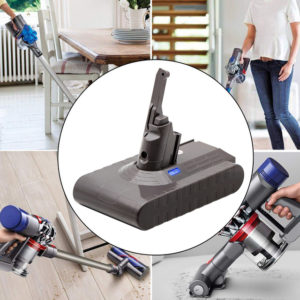
How long your cordless electric power tools and cordless vacuum cleaner will operate from a particular battery is dependent on the appliance’s power consumption in watts (or AC amps x 115V), and the battery capacity. Low inverter efficiency, and improper battery wiring during installation can also reduce run time.
Calculating Cordless Drill Battery and Vacuum Battery Run Time
The following formula can be used to determine run time in most applications using a 12V battery or powerbank:
| 10 x (Battery Capacity in Amp Hours) (Load power in Watts) | = Run time in hours |
Example:
How long will my 100 watt TV run with my PW150 from my car’s engine start battery (60 Ah)?
The load is well within the PROwatt inverter’s maximum power rating, therefore the inverter itself will not limit the run time.
| 10 x (60 Ah) (100W) | = | 6 hours maximum run time before the battery is completely discharged, or 3 hours run time before the battery is 50% discharged. You should still be able to start your car at this point. |
| Estimated Run time for continuous operation using standard vacuum battery capacities | ||||||
| Appliance power in Watts | BCI Group Size > Reserve Capacity > Appliance | 22NF | 24 | 27 | 4D | 8D |
| 90 minutes | 140 min. | 180 min. | 325 min. | 400 min. | ||
| 50 amp hours | 75 Ah | 100 Ah | 160 Ah | 200 Ah | ||
| 50 | Stereo | 9 hours | 14 hrs | 20 hrs | 32 hrs | 40 hrs |
| 100 | 19″ Color TV | 4 | 6 | 10 | 16 | 20 |
| 200 | Computer | 2 | 3 | 4.5 | 7 | 10 |
| 300 | Blender | 1.3 | 2.2 | 3 | 4.5 | 6 |
| 400 | Drill | 1 | 1.5 | 2 | 3 | 4.5 |
| 600 | Coffee Maker | N.R. | N.R. | 1 | 2 | 2.5 |
| 800 | Small Microwave | N.R. | N.R. | N.R. | 1 | 1.5 |
| 1000 | Toaster | N.R. | N.R. | N.R. | 0.5 | 1 |
| 1500 | Large Microwave | N.R. | N.R. | N.R. | N.R. | 0.5 |
Battery Usage Tips
Engine start batteries should not be discharged below 90% remaining charge-state, and marine deep cycle batteries should not be discharged below 50% remaining charge state. Doing this will shorten the life of the battery based on most battery manufacturers’ recommendations.
However, for loads above 100W you will require direct connection to the Dyson V7 Vacuum Battery terminals to eliminate a thin/long battery wire voltage loss that could drastically shorten the run time on a given system.
If you intend to use power tools for commercial use, or any load of 200W for more than 1 hour regularly (between battery recharging) you should install an auxiliary battery to provide power to the inverter. This battery should be a deep cycle type and sized to meet your run time expectations with the engine off. Deep cycle batteries most commonly available are 27 (90 Ah), 4D (150 Ah), 8D (220 Ah) capacity. The auxiliary battery should be connected to the alternator through an isolator module to prevent the inverter from discharging the engine start battery when the engine is off.


